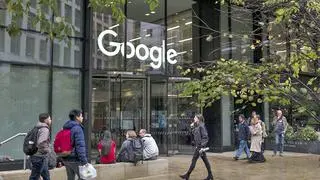Paolo Colella has recently been appointed as the Head of Region for telecom equipment maker Ericsson’s India operations.
He takes over at a time when the telecom sector is poised for changes in the competitive landscape through consolidation, and at the same time set for massive adoption of 4G technology. Colella shared his outlook with BusinessLine . Excerpts:
What are your top two focus areas as the new country head?
India has embarked on a digital journey and as a result, almost every industry is going through a transformation.
With our experience in mobile communications and expertise in combining technology and services, we can help operators and other industries exploit the power of digital mobility. We want to be an ICT transformation partner for customers.
A large part of my focus is also on strengthening the competence base within the organisation, so that we can fully participate in the new opportunities that are opening up in India (such as Smart Cities) and continue with our growth journey in the country.
India is now the third largest market for Ericsson after China. With the demand for 3G and 4G set to take off over the next few months, will India overtake China as the second largest market?
The Indian market is seeing good growth with all leading service providers investing in their networks, expanding their 3G footprint and deploying 4G. We have been able to successfully leverage this market growth and I do hope we can sustain this momentum going forward. From the Ericsson Global perspective, the endeavour will be to grow the revenue contributions from both China and India.
We are already seeing massive 4G deployments taking place in China and India is set to follow suit.
The start-up ecosystem is picking steam in India with many innovative ideas on network optimisation. Is Ericsson open to acquiring or funding start-ups with interesting ideas?
Ericsson is a firm believer in innovation catalysing industry transformation.
We have already created multiple platforms that enable us to support and help foster a vibrant start up ecosystem.
Our ongoing IIT Innovation Awards and Networked India platform enable us to identify and support start-ups across the country.
Recently you had said that Ericsson could double its employee base in India by 2020. Could you give some details in terms of the areas of expansion?
Over the years, India has emerged as the largest employment hub for the Ericsson Group.
Besides the talent we employ to serve the country, we have also established a large global centre that supports our business across the world.
We have established R&D operations in Chennai, Bengaluru and Gurgaon that are working on global R&D projects. We have a new manufacturing facility coming up in Pune in mid-2016 that will be used as a hub for exports to South-east Asia, Middle East and Sub-Saharan Africa.
These areas will see us strengthening our employee base. We are also looking at strengthening our competence in the new and targeted areas so that we can fully leverage the new opportunities coming up in the market. Thus, given our growing presence in the country, I think we can expect to double our employee base in the country by 2020.
Google is looking to launch its Loon project in India. Facebook is bringing its patented technology to set up Wi-Fi in villages, including simpler billing systems. Are these projects a threatfor Ericsson?
Mobile broadband will be the platform on which the ‘Digital India’ vision can be effectively delivered.
As per our Mobility Report estimates, by the end of 2020, more than 95 per cent of the Indian population will be covered through GSM/EDGE technology, while more than 90 per cent will be covered through WCDMA/ HSPA networks.
Any new technology introduction that will drive connectivity for people in villages and remote parts will definitely benefit the country.








Comments
Comments have to be in English, and in full sentences. They cannot be abusive or personal. Please abide by our community guidelines for posting your comments.
We have migrated to a new commenting platform. If you are already a registered user of TheHindu Businessline and logged in, you may continue to engage with our articles. If you do not have an account please register and login to post comments. Users can access their older comments by logging into their accounts on Vuukle.